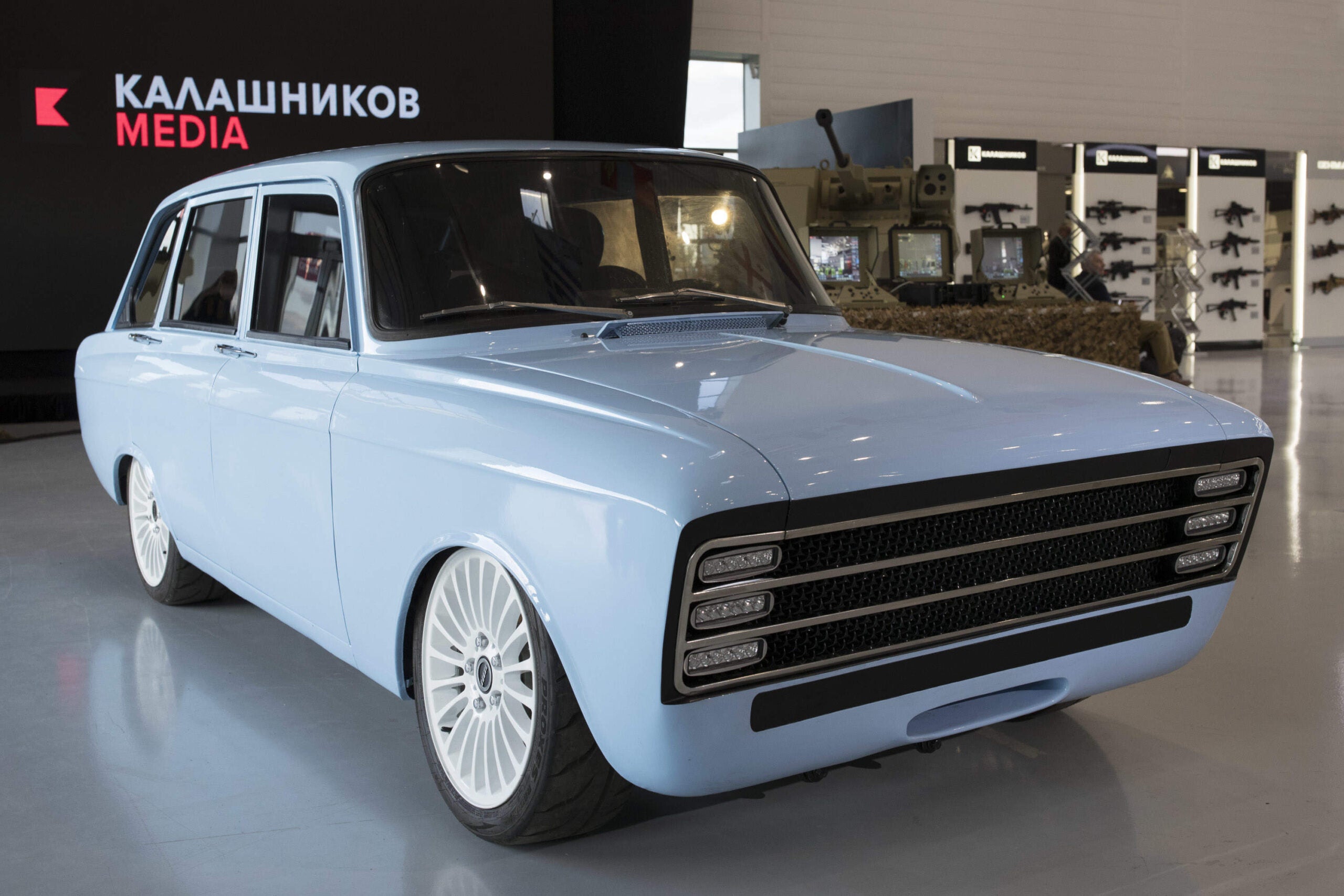Kalashnikov electric car future could see some success domestically long term, but export and short-term prospects remain muted as the AK-47 assault rifle manufacturer ventures into the car industry.
The Russian electric car market is still in very early stages, and Kalashnikov is not the first manufacturer to announce an electric vehicle. Russian carmaker AvtoVAZ unveiled an electric vehicle prototype for the Lada Vesta in August 2016, and the El Lada was launched several years earlier.
The Kalashnikov CV1’s retro design is based on a rare soviet era vehicle called the “Izh-Kombi” and the company states that it will have a range of 217 miles (350km) on a single charge, which potentially puts the CV1 on a par with vehicles such as the Nissan Leaf and the Tesla Model 3.
However, it is not clear what range measurement cycle this figure refers to. It is also a prototype, so the price competitiveness with other mass market electric vehicles remains to be seen.
Globally, electric and hybrid vehicles will continue to grow as policymakers shift regulations. MarketLine forecasts the electric and hybrid vehicle market will grow with a compound annual growth rate of 16.6% between 2017 and 2022.
There could be limited opportunities in export
Russian automotive manufacturers do export, but generally to the Commonwealth of Independent States (CIS), with little brand recognition in developed economies where electric vehicles are being more vigorously supported.
How well do you really know your competitors?
Access the most comprehensive Company Profiles on the market, powered by GlobalData. Save hours of research. Gain competitive edge.

Thank you!
Your download email will arrive shortly
Not ready to buy yet? Download a free sample
We are confident about the unique quality of our Company Profiles. However, we want you to make the most beneficial decision for your business, so we offer a free sample that you can download by submitting the below form
By GlobalDataFor instance, AvtoVAZ exported 16,592 LADA cars to 30 countries in H1 2018, but primarily to Belarus and Kazakhstan.
China already has domestic electric vehicle manufacturers and it is unclear how well the arms manufacturer’s brand would perform.
Domestic market currently limited but prospects improving
Traditionally, electric cars have not been popular with Russian drivers because of a lack of infrastructure, harsh climatic conditions, high price, and limited mileage on a single charge. The climate can impact lithium-ion batteries and lead to a reduction in range, making the car far from ideal in the largest country globally.
However, major cities such as Moscow and St. Petersburg have begun to introduce incentives for electric vehicles such as free parking, and the infrastructure is expanding.
Anecdotal reports from users suggest their cars do function in the Russian winter, although it currently remains inadvisable to do so for prolonged periods.
Kalashnikov is still trying to revive its brand after a close call with bankruptcy
Since the fall of the Cold War, Kalashnikov has struggled to survive as Russian military spending collapsed in the 1990s and early 2000s.
US sanctions on Russia in 2014 hurt the company financially as the bulk of its new sales were from exports to North America, forcing the company to turn elsewhere.
Kalashnikov’s success in Asia, following the completion of significant arms deals in Indonesia and Pakistan, has been pivotal to allow it to explore new revenue opportunities outside of the defense market.







